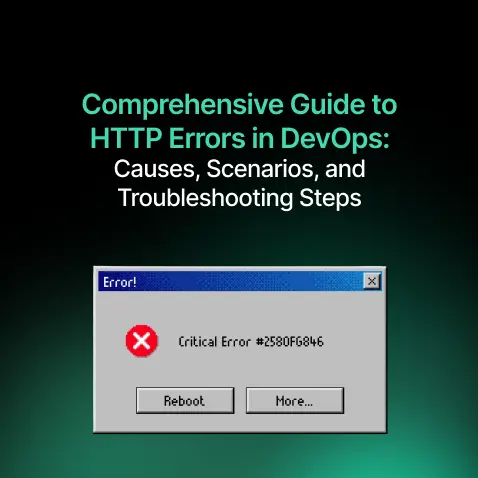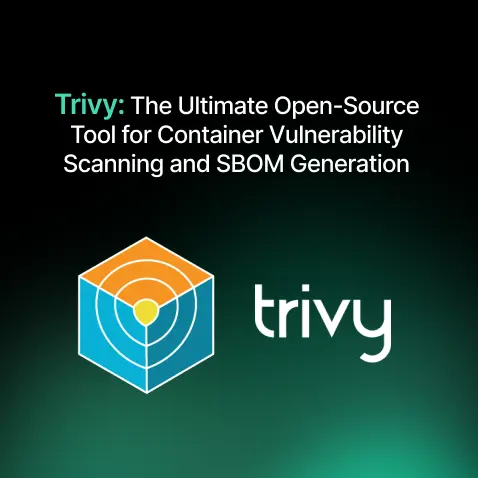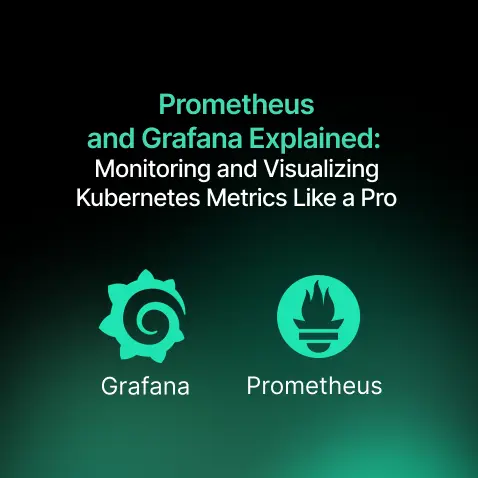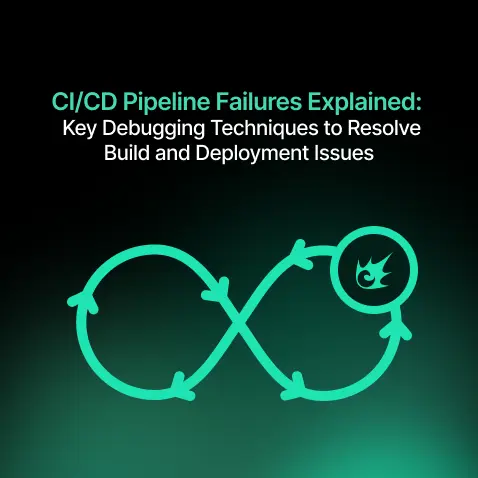Common Mistakes in AWS Credit for Startups and How to Avoid Them
- Nitin Yadav
- Knowledge
About

Maximize your AWS startup credits! Avoid common mistakes, cut cloud costs, and scale smarter with expert tips to stretch every dollar and boost your growth potential.
Industries
- AWS Activate Program, AWS budgeting tools, AWS cost management, AWS credit mistakes, AWS credits for startups, Cloud cost optimization, DevOps on AWS, startup cloud strategy
Share Via
Amazon Web Services (AWS) has become the go-to cloud platform for startups seeking speed, scalability, and cost efficiency. Through programs like AWS Activate, startups can receive thousands of dollars in free AWS credits to build and grow their infrastructure. However, many startups misuse or underutilize these credits due to a lack of understanding or poor planning. In this comprehensive guide, we’ll walk you through common mistakes startups make when using AWS credits and how to avoid them.
What Are AWS Credits for Startups?
AWS credits are financial credits that reduce your AWS bill, usually offered to early-stage startups through the AWS Activate program, AWS partnerships with VCs or incubators, or hackathons. These credits can range from a few hundred dollars to over $100,000 depending on the stage and affiliation of the startup.
Common Mistakes in AWS Credit Usage
1. No Cost Management from Day One
Startups often burn through AWS credits rapidly by not implementing basic cost management tools. AWS Budgets, Cost Explorer, and Trusted Advisor are free tools that help monitor and optimize spending.
How to avoid it: Set up cost alerts and use budgets to allocate spending across teams and services.
2. Over-Provisioning Resources
Founders may choose the biggest EC2 instances or leave unused services running. This drains credit unnecessarily.
How to avoid it: Use right-sizing recommendations and auto-scaling. Turn off dev/test environments when not in use.
3. Failing to Use Free Tier or Spot Instances
AWS provides a Free Tier for many services and steep discounts on spot instances. Startups ignore these options.
How to avoid it: Take advantage of the Free Tier and use spot or savings plans for workloads that can tolerate interruption.
4. Lack of Architectural Planning
Poorly designed architectures lead to high operational costs, even with credits.
How to avoid it: Leverage AWS’s Well-Architected Framework and consult AWS Solutions Architects early on.
5. Ignoring Program Deadlines and Renewals
Some credits expire within 12 months. Startups that don’t track timelines lose out.
How to avoid it: Maintain a credit usage calendar and apply for AWS Activate renewals proactively.
6. Spending All Credits Before Raising Funds
Startups exhaust AWS credits before securing funding, then face large bills with no budget.
How to avoid it: Stretch your credits by being frugal and plan ahead for the transition to a paid account.
7. Using Credits for Non-Essential Services
Spending credits on unnecessary analytics or machine learning projects can result in waste.
How to avoid it: Prioritize services that directly support product development and user growth.
8. Neglecting Third-Party Billing
Some startups sign up for third-party software through AWS Marketplace without realizing it counts against their credits.
How to avoid it: Understand what is billable under credits and evaluate whether services are truly needed.
9. Not Consolidating Accounts
Multiple accounts or environments without centralized billing can make credit tracking difficult.
How to avoid it: Use AWS Organizations to manage multiple accounts under a single billing dashboard.
10. Assuming Credits Cover Everything
Credits often don’t apply to support plans, third-party tools, or certain services.
How to avoid it: Read the fine print and use AWS billing support to confirm what is covered.
Best Practices for Maximizing AWS Credits
- Create a Usage Roadmap: Forecast your infrastructure needs and align them with credit usage over time.
- Use Automation: Set up auto-scaling and automated backups to manage costs.
- Enable Cost Anomaly Detection: Catch sudden spikes in spending early.
- Tag Your Resources: Use tags to track which team or feature is responsible for each resource.
- Consult AWS Support: Take advantage of technical support or startup programs offering mentorship.
Real-World Scenarios: Startups That Got It Right
Case Study 1: SaaS Startup Reduced Burn by 45%
A B2B SaaS company used AWS Cost Explorer and Spot Instances to cut their infrastructure bill, extending their credit lifespan by 6 months.
Case Study 2: EdTech Startup Saved $10,000
An EdTech startup utilized AWS Activate’s architectural guidance and built on serverless services like Lambda and DynamoDB to stay within budget.
Case Study 3: Fintech Company Lost $15,000 in Expired Credits
A fintech firm didn’t track its credit expiration and burned through them with overprovisioned EC2 instances. Learning: Time tracking and cost dashboards are critical.
How to Apply for AWS Credits
- AWS Activate Founders: No affiliation required. Apply with your startup’s website and company details.
- AWS Activate Portfolio: Offered through VCs, accelerators, and incubators. Often includes higher-value credits.
- Hackathons and Events: Participating in AWS-hosted events can give access to smaller credit pools.
- AWS Marketplace Partners: Some partners offer their own credit packages on top of AWS ones.
Be sure to review eligibility criteria before applying. Most programs expect you to be pre-revenue or early-stage.
Tools Every Startup Should Enable
- AWS Cost Explorer
- AWS Budgets
- AWS Trusted Advisor
- Compute Optimizer
- Well-Architected Tool
- CloudFormation or Terraform (for IaC)
Questions to Ask Before Using AWS Credits
- What services are critical to my MVP?
- How long do I need to stretch these credits?
- What monitoring tools can help manage this budget?
- Are we eligible for more credits?
- What is our transition plan once the credits run out?
Conclusion
AWS credits can be a powerful growth lever for startups, but only if used wisely. With proper planning, architecture, and cost tracking, these credits can take you from MVP to product-market fit without burning your runway. Avoiding the common pitfalls and making strategic decisions can save you thousands of dollars and help you scale confidently.
Use your credits to build the foundation of a sustainable, scalable product—and keep your burn rate in check while doing so.
Contact SquareOps Today & Optimize Your AWS Credits
Frequently asked questions
AWS credits are promotional funds offered to startups through programs like AWS Activate. They help cover costs for cloud services such as EC2, S3, Lambda, and more.
Startups can apply via AWS Activate Founders (no VC backing required) or through Activate Portfolio if they’re affiliated with accelerators, incubators, or VCs.
Yes, AWS credits typically expire within 12 months from the date of issuance. It’s crucial to monitor expiration dates to avoid losing unused credits.
AWS Activate is a startup support program offering cloud credits, technical support, architectural guidance, and training resources to help early-stage startups grow.
Most AWS services are covered, but some exclusions apply such as support plans, third-party marketplace tools, and some premium offerings. Always review the terms.
The most common mistake is failing to implement cost tracking from day one, which often leads to overspending and rapid depletion of credits.
Use tools like AWS Cost Explorer, Budgets, and Trusted Advisor to monitor credit usage and identify optimization opportunities.
In some cases, yes. Startups may be eligible for additional credits by applying for a higher-tier program or through their accelerator or VC partnership.
Focus on essential infrastructure for your MVP like EC2, S3, RDS, Lambda and avoid non-critical or experimental workloads.
Yes, when using AWS Organizations, credits are pooled across all linked accounts under the same billing setup, simplifying credit management.
Related Posts

Comprehensive Guide to HTTP Errors in DevOps: Causes, Scenarios, and Troubleshooting Steps
- Blog

Trivy: The Ultimate Open-Source Tool for Container Vulnerability Scanning and SBOM Generation
- Blog

Prometheus and Grafana Explained: Monitoring and Visualizing Kubernetes Metrics Like a Pro
- Blog

CI/CD Pipeline Failures Explained: Key Debugging Techniques to Resolve Build and Deployment Issues
- Blog

DevSecOps in Action: A Complete Guide to Secure CI/CD Workflows
- Blog

AWS WAF Explained: Protect Your APIs with Smart Rate Limiting
- Blog

